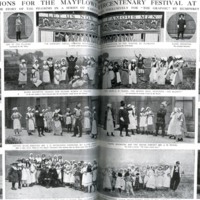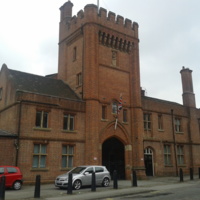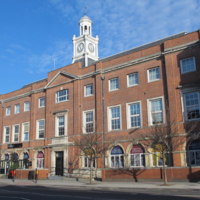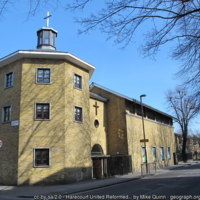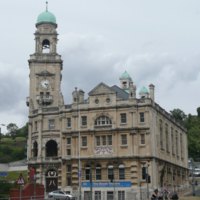Item List (8)
- Tags: Hugh Parry
Historical Mayflower Pageant (Plymouth, 1920)
Historical pageants, a sort of amateur re-enactment, were incredibly popular forms of engagement with the past in the early to mid 20th century. They usually took the form of a series of chronological episodes, often starting as far back as the…
Type: Historical Reenactment
Sheffield's late Mayflower pageant, Drill Hall, Sheffield (February, 1921)
Hugh Parry’s pageant, which you can read more about here, travelled around the UK throughout 1920 and into the next year. In February 1921, it came to Sheffield. The fanfare around the event was huge: newspapers had begun trailing the spectacular in…
Type: Historical Reenactment
A belated Mayflower pageant, Public Hall, Preston, Lancashire (March, 1921)
Lancashire always claimed a certain affiliation with the Mayflower story because of Myles Standish’s local connection. As residents of one of the premier cities in “Standish country”, the people of Preston felt entitled to have their own performance…
Type: Historical Reenactment
Hugh Parry's pageant continues to attract audiences, Northern Polytechnic, Holloway Rd., London (April, 1921)
Hugh Parry’s Mayflower pageant was a huge draw throughout the autumn of 1920. In London, the pageant was performed for 25 days, from the end of October to the middle of November. But it returned to London in April 1921, where it ran for ten days at…
Type: Historical Reenactment
Tags: Hugh Parry, nonconformity, Tercentenary
A Mayflower bazaar, Harecourt Chapel, Canonbury, North London (November, 1920)
The end of the tercentenary year saw a number of Mayflower-themed bazaars and sales of work. Such events were often held at churches and chapels around the Christmas period to raise money for repairs and building work, and the tercentenary provided a…
Type: Miscellaneous
Tags: Hugh Parry, nonconformity, Tercentenary
Hugh Parry's Pageant, Drill Hall, Huddersfield (November 1920)
Rev. Hugh Parry’s historical pageant of the Mayflower was a roaring success throughout 1920 and into the following years. It debuted in Plymouth and had triumphant runs in Manchester and London, to the extent that the organisers were being pressed to…
Type: Historical Reenactment
Tags: Hugh Parry, nonconformity, Tercentenary
Hugh Parry's Mayflower Pageant, Horticultural Hall, London (September-October 1920)
The performance of Hugh Parry’s Mayflower pageant (which you can read more about here) was the biggest Mayflower event in London, and possibly in the country. The performances took place at the large Royal Horticultural Hall, Westminster, which was…
Type: Historical Reenactment
Mayflower Pageant, Chatham, Kent (May, 1920)
Chatham, on the Medway in North Kent, was one of several towns and cities to undertake performances of the Mayflower Pageant written by the Rev. Hugh Parry (which you can learn more about here). Like many early twentieth-century pageants, Parry’s…
Type: Historical Reenactment

